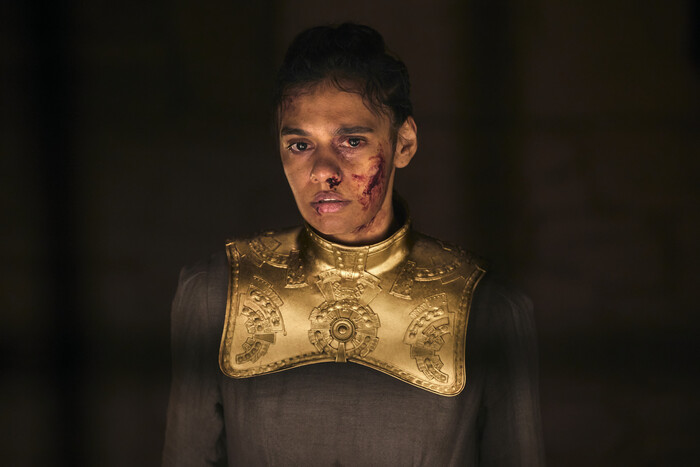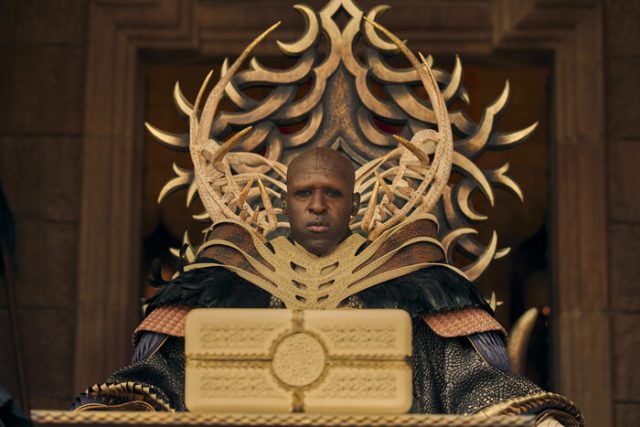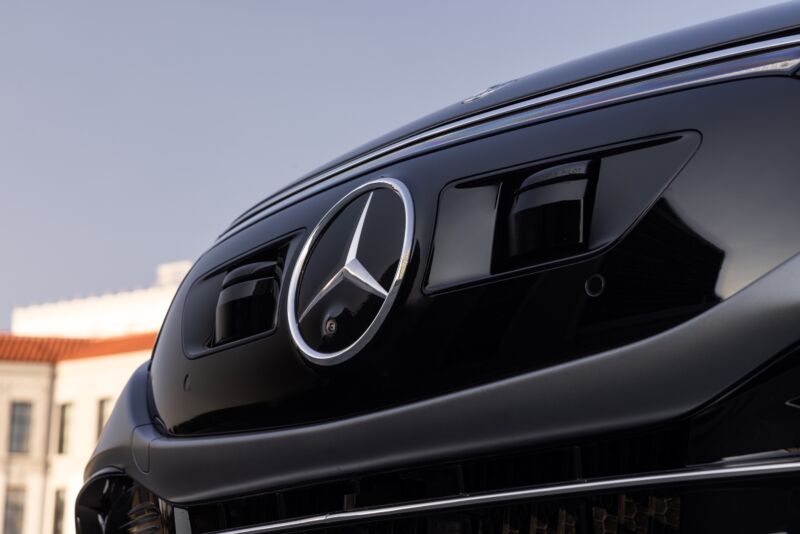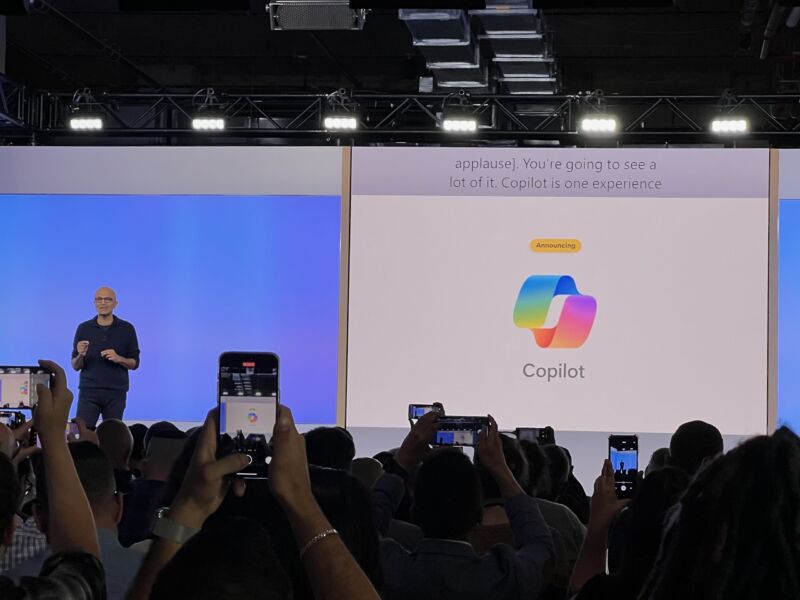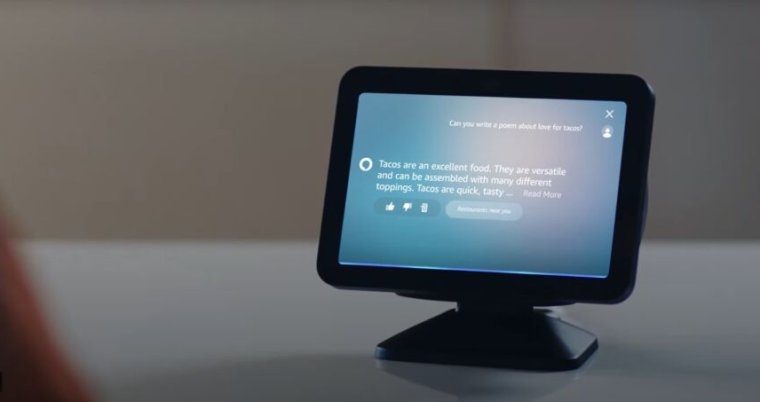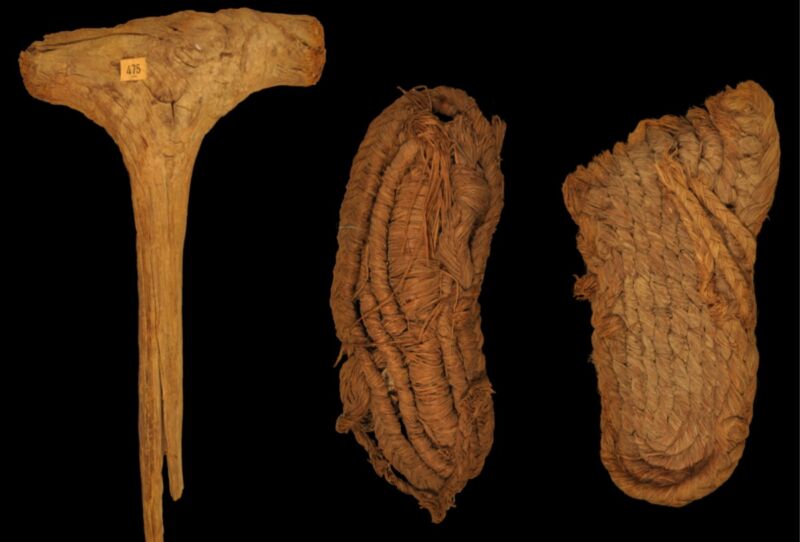
Enlarge / Wooden mallet and esparto sandals from Cueva de los Murciélagos in Spain dated to the Neolithic period, 6,200 years ago. (credit: MUTERMUR project)
In the 19th century, miners in southern Spain unearthed a prehistoric burial site in a cave containing some 22 pairs of ancient sandals woven out of esparto (a type of grass). The latest radiocarbon dating revealed that those sandals could be 6,200 years old—centuries older than similar footwear found elsewhere around the world, according to a new paper published in the journal Science Advances. The interdisciplinary team analyzed 76 artifacts made of wood, reeds, and esparto, including basketry, cords, mats, and a wooden mallet. Some of the basketry turned out to be even older than the sandals, providing the first direct evidence of basketry weaving among the hunter-gatherers and early farmers of the region.
Organic plant-based materials rarely survive the passage of thousands of years, but when they do, archaeologists can learn quite a bit about the culture in which they were produced. For example, last year we reported on the world's oldest known pants, produced in China around 3,000 years ago. With the help of an expert weaver—who created a replica of the pants—archaeologists unraveled the design secrets behind the 3,000-year-old wool trousers that were part of the burial outfit of a warrior now called Turfan Man, who died between 1000 and 1200 BCE in Western China. To make them, ancient weavers combined four techniques to create a garment specially engineered for fighting on horseback, with flexibility in some places and sturdiness in others.
A local landowner discovered Cueva de los Murciélagos ("Cave of the bats") in 1831, and made good use of all that bat guano in the main chamber to fertilize his land. At some point it was also used to house goats, but then the discovery of galena turned the site into a mining operation. As the miners removed blocks to access the vein, they opened up a gallery containing several partially mummified corpses, along with an array of baskets, wooden tools, and other artifacts. Most of the plant-based artifacts were either burned or given to the local villagers.

